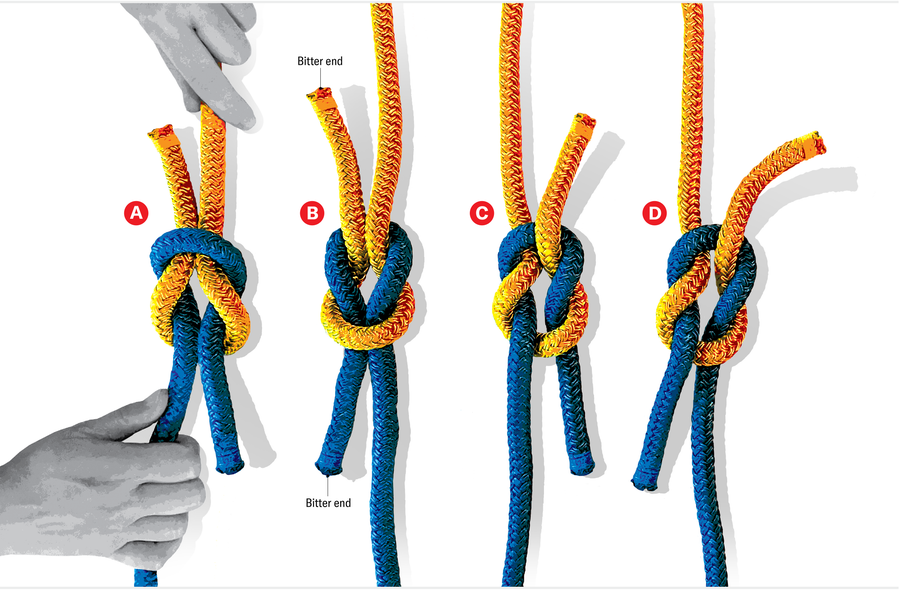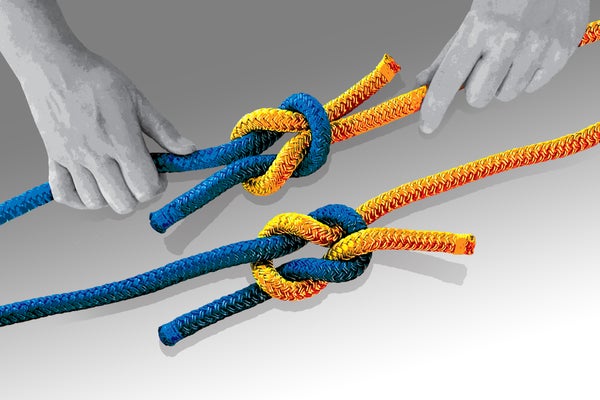Humans are pretty good at guessing whether a towering stack of dishes in the sink will topple over or where a pool ball will go when a cue hits it. We evolved this kind of physical reasoning to navigate our changing and sometimes dangerous environments. But a new study highlights one area of intuitive physics that’s deceptively difficult: judging how strong a knot is.
Take a look at these four knots, which may look similar but are all distinct. Which knot would be hardest to undo if you pulled on the two long ends of its ropes? Rank them in order from weakest to strongest.

Jen Christiansen; Source: “Tangled Physics: Knots Strain Intuitive Physical Reasoning,” by Sholei Croom and Chaz Firestone, in Open Mind, Vol. 8; September 2024 (reference)
On supporting science journalism
If you're enjoying this article, consider supporting our award-winning journalism by subscribing. By purchasing a subscription you are helping to ensure the future of impactful stories about the discoveries and ideas shaping our world today.
These four knots can be grouped into two pairs of similar configurations: the “thief” (A) and “reef” (B) knots, and the “granny” (C) and “grief” (D) knots. In both pairs, one knot is vastly stronger than the other. The correct weak-to-strong ranking is grief, thief, granny and reef (D, A, C, B).
If you’re surprised, you’re in good company. Researchers recently asked volunteers to look at photographs of these knots and decide which would take more force to undo. The participants consistently misjudged the strength of the ties by wide margins, Johns Hopkins University brain science researchers Chaz Firestone and Sholei Croom report in the journal Open Mind.
“Reef and thief knots were rated as similarly strong because they’re visually similar, but the position of the bitter ends”—the shorter, cut-off ends in each knot—“is really significant,” Croom says. “A knot with two bitter ends on opposite sides is a lot weaker than if the two sides are the same. The grief knot, aptly named, is so weak you could sneeze on it and it would fall apart.”
KNOT BASICS
The fact that people are bad at evaluating knot strength is surprising because we encounter them in many situations—from tangled electronic cords to hair braids, knitting stitches to medical suture ties, rock climbing to sailing. “Tying a knot properly can spell the difference between safety and peril,” Croom says. The four shown here are among the simplest knots that can be tied with two lengths of string, and they are prevalent in daily life.
PHYSICAL REASONING
Studying areas where our physical intuition fails helps scientists better understand how our brains perceive the world around us. “Knots might be an interesting case study on constraints around our physical reasoning,” Croom says. “Is it something to do with elasticity? Is it the fact that it’s a soft-body object rather than a rigid-body object?” Figuring out why tangles are so tricky could help scientists predict when people’s snap judgments about a physical situation are likely to be wrong, leading to unsafe reactions.
